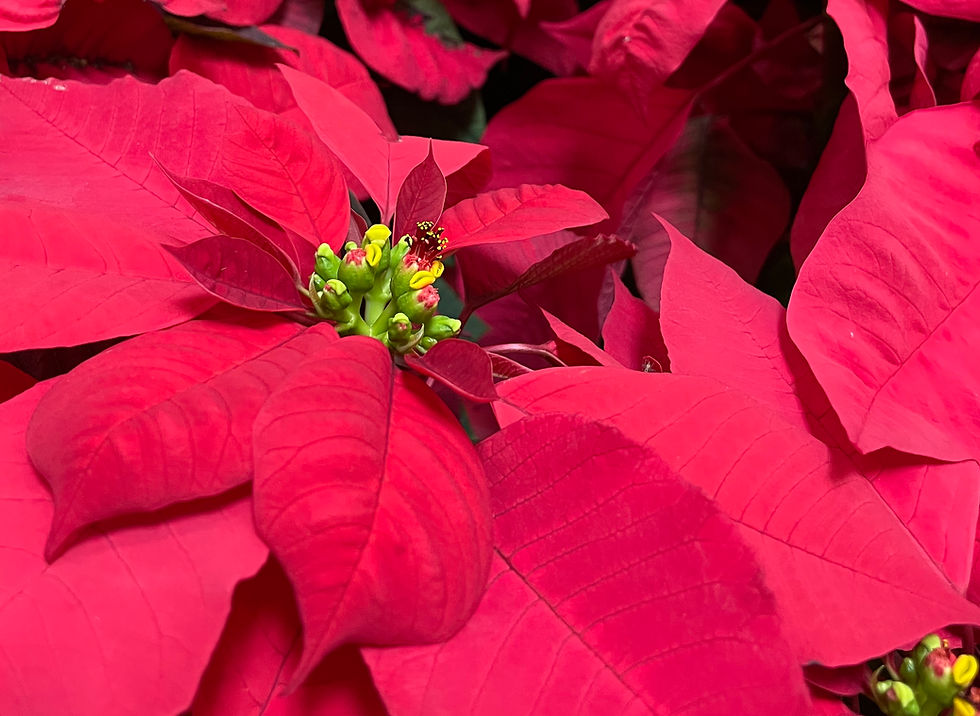Anita’s Blog – April is for Native Plants
- jjvanm
- Apr 2, 2024
- 4 min read
April is National Native Plant Month -- The 118th Congress of the United States declared by unanimous consent Senate Resolution 603 designating April 2024 as National Native Plant Month.
The Rio Grande Valley had a spectacular turnout at the Big Bloom RGV Home and Garden Show in March where South Texas Border Chapter Texas Master Naturalists sold a record number of native plants at our booth at the show at the McAllen Convention Center. Thank you to all the locals and Winter Texans who purchased plants to support the Valley's native habitat and others who listened and learned about incorporating native plants into their garden’s habitat.
Just for fun, don’t scroll down past the photos yet. Check out these five plants in the photos. Can you name them? Can you pick out the ones that are native? After you’ve looked at the photos and answered the two questions for each photo, you can scroll past the photos and check your answers.





The answers in order of the above photos:
Ivy-leaved Morning-Glory, Ipomoea hederacea. Not native. Sadly, this blue flowering beauty is listed in the Invasive Plant Atlas of the United States as invasive in the Rio Grande Valley. Gobotany.org indicates it’s a serious agricultural weed in the Southern United States, where it can significantly reduce cotton yields, which is where this photo was taken – in a cotton field, May 1, 2021, during the City Nature Challenge. I’d not seen this vine prior to that date, nor have I seen it since in the farm field adjacent to our property. It’s SO pretty and has awesome shaped leaves – just goes to show, be wary of a pretty face! Although, it attracts bees, butterflies and even hummingbirds, so it can’t be all bad.
Silverleaf Nightshade, Solanum elaeagnifolium. Native. Common along roadsides. Blooms spring through fall and during drought periods. Flower is a nectar source; fruit is a yellow, marble-sized berry, black when ripe. Fruits are eaten by deer, javelinas and feral pigs; seeds are eaten by bobwhite quail.
Possum grape, Cissus trifoliata. Native. Also called Marine Ivy, sorrelvine, grape ivy and cow-itch vine. It’s pretty. It has light green sturdy, crisp fleshy leaves, greenish umbrella-shaped clusters of flowers that bloom in late spring and summer and attract butterflies; black, shiny berries that mature in fall, eaten by birds. It’s everybody’s favorite plant to hate. I found a website that encouraged the use of this plant to disguise unattractive sheds and buildings on your property – yeah, I thought, if you never want to find them again!
The vine can cling or trail some 30 feet with a 10-foot spread; it hooks on to plants, trees, fences, structures and anything in its path with curling tendrils. It has underground tubers as big as an adult human’s arm that help distribute the vine multidirectionally underground – those tubers need to be dug up to eradicate the vine. In spite of all that, it’s a fun vine to have, barring those clandestine underground active tubers.
The good news about possum grape: Wilson’s wood-nymph moth caterpillars use it as a host plant. I’ve found a dot-lined white moth caterpillar, Western honeybees and cool-looking Ins celeris flies on the vines and flowers. And the best news: Possum grape is a larval host to at least four beautiful sphinx moths: the mournful, vine, satellite and gaudy sphinx.
Spiny sowthistle, Sonchus asper- Not native to Texas. Native to Europe, North Africa and Western Asia. A cool season annual plant that can grow two to four feet tall; it has aspirations of taking over the earth. Pay heed to its name; don’t pull them out of the ground without wearing gloves. They are armed with sharp, wicked, jagged, coarsely toothed, deeply lobed leaves; the stems have tiny irritating hairs reminiscent of holding onto a tasajillo jumping cactus. The multiple blooms of dandelion-like flower heads turn to white fuzz; one plant is capable of producing legions of seeds that will be dispersed by the wind via those white fluffy helicopters. It has been naturalized on most continents, including North America and is considered a noxious, invasive weed outside its native range.
Yellow Trumpet Flower, Tecoma stans,. Native. iNaturalist.org calls it yellow trumpet flower. If you’re local to the Valley, it’s Esperanza or Yellow Bells. It’s a South Texas native, and with an extensive range west to Arizona and south through Mexico and Central America to South America and beyond. Its glorious yellow trumpets, with their golden nectar guides, lure bees and bugs and insects and hummingbirds. It’s a shrub that can grow as tall as 9 feet. If you don’t have room, keep a smaller one as a patio potted plant – in a container at least 12-inches in diameter (according to Lady Bird Johnson’s wildflower.org). Esperanza blooms profusely from late March through November. It is a larval host to the Dogface butterfly and Plebeian Sphinx, Calleta Silkmoth and Southern Flannel Moth.
- 30 -





